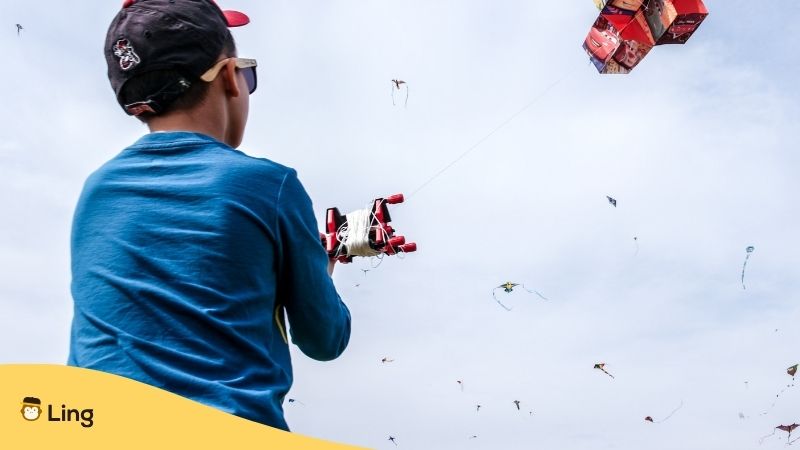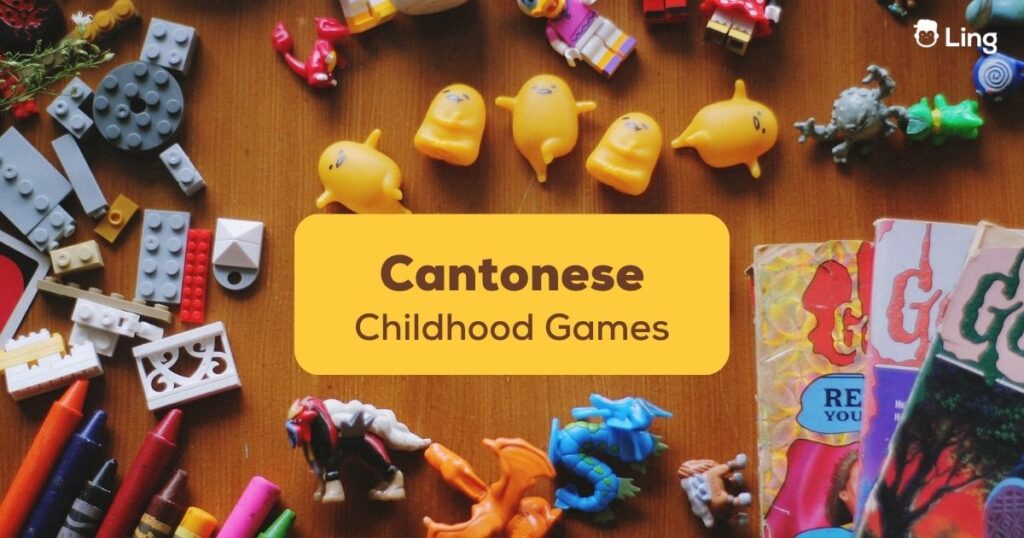With a risk of sounding sentimental, this time we will be reminiscing about Cantonese childhood games. Childhood memories are like treasures, and if you grew up in Hong Kong, they are filled with the sounds of laughter, camaraderie, and endless fun. These traditional Chinese games are more than just play; they are a testament to the culture, traditions, and spirit of Hong Kong and of being young and growing up in the region.
This time, we will explore the top 10 Cantonese childhood games that every child in Hong Kong grew up playing, and how these games have shaped generations of Hong Kongers.
List Of Cantonese Childhood Games
Come, let’s take a quick look at the childhood games that are quite popular among the Cantonese people.
Hopscotch – Tiu1 Fong2 Zi2 (跳房子)
Hopscotch is a universal childhood game, but it has its unique Cantonese twist in Hong Kong. Children draw a grid on the ground with chalk, resembling little houses, and then take turns hopping through the boxes while avoiding stepping on the lines. The goal is to reach the end without any mistakes. This game not only helps with balance and coordination but also encourages friendly competition and bonding among kids.
Ping Pong Ball – Ping4 Pong4 Bo1 (乒乓波)
Ping pong ball is a simple yet highly addictive game that requires only a ping pong ball and a small plastic paddle. Children take turns trying to bounce the ball off a wall and catch it with the paddle. The goal is to see how many times they can do this consecutively without dropping the ball. This game is not only a test of hand-eye coordination but also a great way to pass the time during school recess or after school.

Marble Shooting – Daa2 Daan6 Zyu1 (打彈珠 )
Marble shooting is a beloved pastime in Hong Kong. Children collect colorful glass marbles and take turns flicking or shooting their marbles to hit a target marble out of a circle drawn on the ground. The precision and technique required to win make this game highly competitive and exciting. Kids often spend hours honing their shooting skills and trading marbles with friends.
Double-Dutch Jump Rope – Soeng1 Tiu4 Daai6 Sing4 (雙條大繩)
Jump rope is a classic playground game usually played outdoors, but in Hong Kong, it often takes the form of double Dutch often played by two teams. Two long ropes are twirled in opposite directions, and children take turns jumping in and out of the ropes. The game becomes increasingly challenging as the speed and complexity of the rope twirling increase. It’s a fantastic cardio workout and a display of teamwork among the participants.
Picking Pebbles – Wan2 Sek6 Tou2 (揾石頭 )
Picking pebbles is a simple yet endlessly entertaining game. Kids gather small, flat pebbles and take turns flicking them towards a target, usually a hole dug in the ground. The goal is to land the pebble inside the hole. This game hones fine motor skills and precision, and it can be played almost anywhere, from parks to sidewalks.
Paper Plane Races – Fei1 Zi2 Fei1 Gei1 (飛紙飛機)
Making and racing paper planes is a quintessential childhood activity in Hong Kong. Children fold sheets of paper into various plane designs and then compete to see whose plane can fly the farthest. This game encourages creativity in design and teaches kids about aerodynamics in a fun and interactive way. Another popular paper folding game is Paper Fortune Teller (東南西北) which, a bit like a crystal ball, is guaranteed to accurately tell the future of other children.
Catching Prawns – Zuk6 Haa1 (捉蝦)
Hong Kong’s proximity to the sea makes catching prawns a popular childhood pastime. Children head to tidal pools or shallow waters with small nets and buckets, searching for tiny shrimps and prawns. It’s not only a fun outdoor activity but also a way to learn about marine life and the importance of preserving the environment.
Chinese Chess – Zoeng6 Kei4 (象棋)
Chinese Chess, also known as Xiangqi, is one of the strategic board games that has been played in Hong Kong for generations. It’s similar to Western chess but with different pieces and rules. Children learn to strategize, plan moves, and develop critical and strategic thinking skills through this game. Chinese Chess fosters a deep appreciation for traditional Chinese culture and strategy and should not be mistaken for Chinese Checkers, which was invented in Germany and adopted the moniker to make the game sound more exotic and mysterious.

Kite Flying – Fong3 Fung1 Zeng1 (放風箏)
Kite flying is a favorite Cantonese activity with many kids, especially during the windy spring season. Kids design and build their kites, often with intricate designs and vibrant colors. The sky above Hong Kong’s parks and beaches fills with these majestic creations as children and adults alike try to outmaneuver each other in the air. It’s not just about flying kites but also showcasing craftsmanship and creativity.
Four Corners – Sei3 Gok3 (四角)
Four Corners is an excellent game of agility, strategy, and teamwork that can be played indoors. Kids form teams, and each team stands in one of the four corners of a square playing area. The player in the center, who is “it,” tries to tag players from the corners as they dash from one corner to another. It’s a brilliant idea for a game that combines speed and evasion tactics, promoting physical fitness and cooperation among players.
These top 10 Cantonese childhood games capture the essence of Hong Kong’s spirit, from the creativity of kite flying to the strategy of Chinese Chess. While technology has introduced new forms of entertainment and kids play games that have made them internet-obsessed phone-bound Pokémon trainers, these traditional games continue to hold a special place in the hearts of those who grew up in Hong Kong.
Learn More Cantonese Childhood Games With Ling
Playing games is a great way to increase your Chinese vocabulary and communication skills. The Ling app is also a fantastic way to improve your Cantonese skills from learning simplified Chinese characters to practicing conversation, Ling is perfect for both beginners and advanced students. Try the Ling app at Google Play and the App Store today.


































































